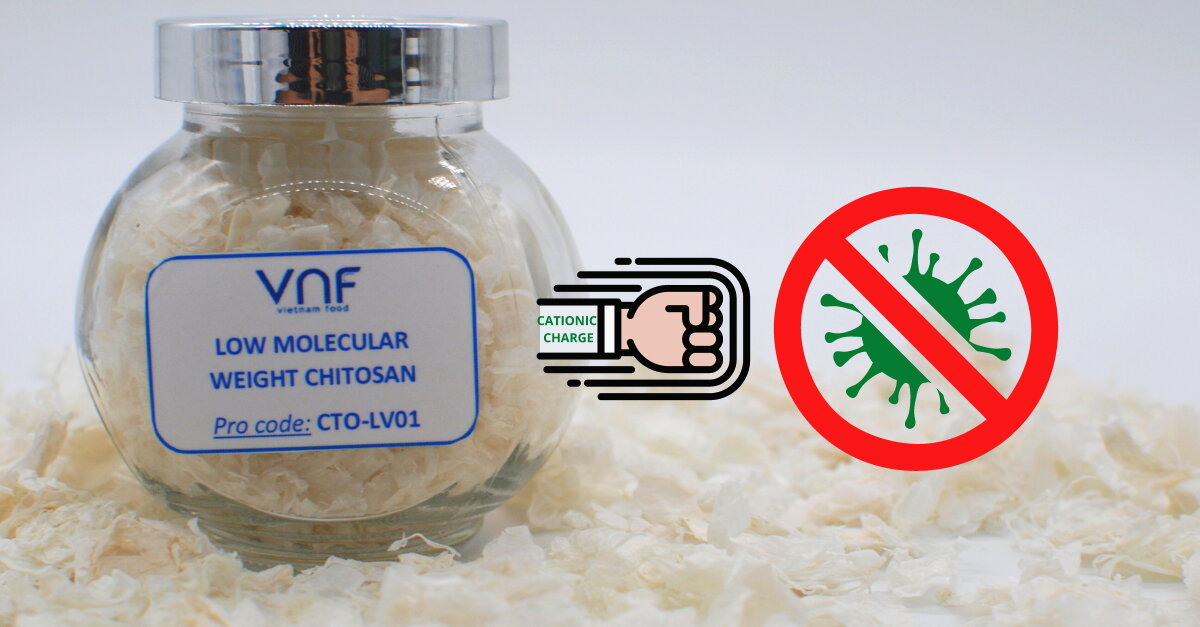Follow our Chitosan post series here:
If you read the last article (and first article) in this BioPolymers series, you will know that we left on a (slightly dramatic) cliff-hanger. “Chitosan can be used for every single industry in the world. But not one type of Chitosan can be used every single industry”
The first time VNF heard these impactful 2 sentences, there was a brief moment of silence followed by a rapid succession of questions. The stand out questions being “How?” and “Why is Chitosan not already used for every industry?”.
Let’s tackle the first “How?”.
It is very catchy to remember the BioPolymers Chitosan as possessing 3 powerful “B” traits.
Firstly, Chitosan is BIO-FRIENDLY. Originating from the 2nd most abundant polymer in the world (Chitin), Chitosan is a natural and non-toxic polymer. Chitosan is safe and beneficial for humans, land animals, aquatic, environment, and water sources within a wide range of diverse applications. Aside from water, you would be hard-pressed to identify a material that is biocompatible for every living being and organism on this planet (except if you are allergic to the anthropod the Chitosan originates from, in that case, I’d recommend anyone with shrimp allergies being careful when consuming shrimp-based Chitosan). Considering Chitosan originates from arthropods, insects, and fungi, the concept that Chitosan ‘comes from nature’ and can add value back to nature is a marketing idea practically waiting to sell itself.
Secondly, Chitosan is BIODEGRADABLE. If you bury Chitosan in your garden, it will naturally biodegrade into a liquid that is beneficial for plants as a natural liquid fertiliser. Chitosan’s ability to naturally degrade in the soil is due to the presence of bacteria and fungi that produce an enzyme called Chitinase. As the name already implies, Chitinase is capable of breaking down Chitin into a compound to be digested easily. This is the underlying mechanism why agriculture sectors supplement soil with specific mixtures from crustacean shells, Chitin, and Chitosan to encourage the growth of chitinase/chitosanase-excreting microorganisms – therefore shifting the composition of the chitinolytic soil microbiome towards less optimal conditions for the growth of dangerous fungi, nematodes, and nematode eggs. All in all, (depending on the soil condition and factors such as climate, humidity, etc.), an enzyme in soil (aptly) named Chitinase can break down Chitosan but we guarantee you, VNF’s Chitosan sitting in storage will not turn into a liquid or magically disappear into thin air.
Last but not least, Chitosan is ANTIBACTERIAL. (Okay we may have cheated calling this the 3rd “B” word but please don’t pronounce the first 4 letters as loudly). If you have ever physically seen Chitosan, you are probably confused as to how a feather-light, nearly-translucent white flake can fight bacteria. The first time I learned of Chitosan’s anti-bacterial properties, I imagined this white flake was a silent superhero capable of fighting dangerous and invisible bacteria. (I held it against the light and imagined a scenario where underneath its normal polymer facade, it was hiding a superhero costume with a capital “C” and cape). Aside from the hidden-hero-by-night story, Chitosan’s superpower is that it possesses a cationic charge capable of interacting with negative cell walls. This electrostatic interaction causes membrane lysis, distorts membrane permeability, leakage of intracellular components, and ultimately prevents the bad cell from reproducing. No longer can these bad cells hide, regrow, and hide within an organism, because Chitosan’s Cationic powers have saved the day.
Now that we have covered the “How” Chitosan is beneficial for practically every industry, the next BioPolymers article will tackle the topic of “How Chitosan can be applied to specific industries” starting with Biodegradable Bioplastics….
Please stay tuned because the next one will make you look at your takeaway plastic coffee cup in a whole new light…










